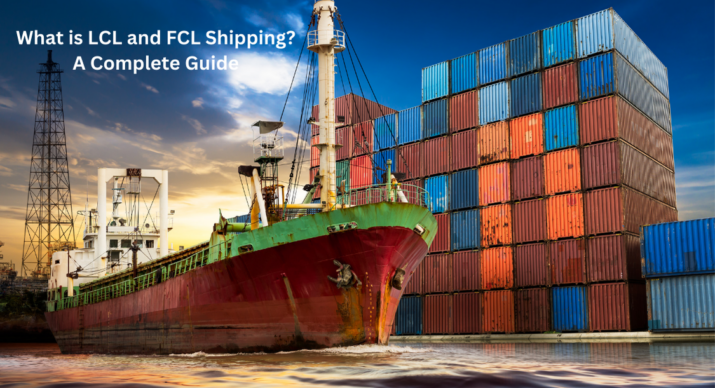Choosing the right shipment mode becomes important in financial respects since it must always be ensured minimizing the cost of transport. For example, LCL allows cost savings if the goods do not fill a container. The LCL mode of shipping also allows savings on storage by shipping smaller goods more frequently.
However, the security factor is essential and must also be considered. Grouped shipments include loading/unloading, which could lead to damage, loss, or theft. Clients who are in need of secure transportation prefer the use of single containers (FCL). This mode has bulk containers that are sealed after initial loading and are not be opened until arrival at the destination.
What is FCL and LCL in Shipping?
FCL (Full Container Load)
An FCL is a mode of shipping where a single shipper books the entire container for his goods. This mode is preferred for larger shipments as the volume of cargo justifies renting the whole container. The other advantage of FCL shipping is that the container is sealed and unopened until the final destination. This provides increased security and minimum handling.
LCL (Less than Container Load)
LCL (Less than Container Load) applies for the goods from a single shipper who does not want an entire container. So, shipments from various shippers are assembled and included in one container. This is economical for smaller shipments; however, it requires more handling of cargo, which increases the risk of damage.
Similarities and differences
There are differences between FCL and LCL which might be overwhelming, and for the buyer, the common question is which is better of the two methods? There are several factors worth considering. The primary ones are: the volume of the shipment, route, timeline, and costs. LCL allows shipping lower volumes for their shipments, and other things like the freight, local charges which are usually higher than FCL. It is helpful comparing LCL pricing with FCL.
It is best to check the freight forwarding company's pricing for both LCL and FCL if the shipment weighs approximately 15 CBM. You should compare factors like freight cost, transit time, and other charges. Having a reliable shipping company and understanding the fundamentals of shipping will help them choose the best way to ship their goods.
With that said, you shouldn’t just consider choosing LCL or FCL freight based on the cost or size of shipment. Choosing FCL or LCL sea freight impacts many elements of the shipping service. Here are some important considerations:
Secured Transport
Many businesses prefer FCL sea freight for the security that it provides and the peace of mind as the cargo is stored securely within its own container.
Also, there is risk of damage, theft, or loss when transporting goods with an experienced shipping provider, LCL freight will be handled more than FCL freight.
Transportation Speed
Sharing a container with multiple shipments from different businesses, needs extra days for processing. The time taken for loading and unloading separate goods in LCL freight can be longer than FCL freight. Also, you have to wait for other goods to arrive before the container is loaded in LCL ocean freight.
Flexibility
When dividing your shipments that need to be sent to different destinations, LCL sea freight is preferred as more flexibility is offered than FCL. Also, cargo is split across multiple shared shipping containers, which reduces the cost of warehousing, and other things like unloading and sorting when the shipment arrives.
Summary
Less than Container Load (LCL) sea freight is a wise and affordable option for small and medium-sized enterprises looking to ship their goods abroad, according to IMEX Shipping & Logistics LLC. It enables companies to share container space, which lowers expenses while providing the freedom to ship effectively to several locations.



